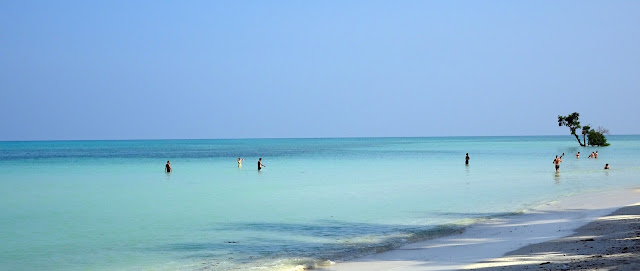Best Deep sea Diving in 2022
Here in this post, we will discuss deep-sea diving or Deep sea diving in India in brief so You can understand each and every point.
Deep-sea diving is a type of scuba diving that allows you to go deeper than the recreational limit of 40 meters (130 ft). Beyond this depth, more complex and safer equipment is required. Deep-sea diving is usually done for science or profit due to the logistical assistance and expenses necessary.
Underwater Observation and Work
Divers can use deep-sea diving to conduct underwater observations, surveys, or work. Deep-sea diving techniques and equipment are used by geologists, biologists, ecologists, physiologists, and archaeologists for profit as well as to advance humanity's knowledge of the planet Earth. Wreck surveys, submarine rescue operations, pipeline welding and cutting operations, bridge and platform inspections, and inspections of piers, platforms, breakwaters, dams, nuclear power plants, and sewer discharge lines are all performed by commercial divers. They also recover cargo from sinking ships that is valuable or polluting. One problem must be overcome in all such diving: the diver's exposure to cold water. Drysuits with layered undergarments, breathing-gas heaters, body heaters, bell-system insulation and heaters, and warm-water suits are also employed.
The Breathing Medium
Advanced systems, similar to those worn by astronauts, are used to provide breathing gases. Hoses connected to surface compressors or banks of gas bottles, a surface-supplied bell system, or bottom-stationed habitats are all options for delivery.
Compressed air can only be used at depths of less than 76 metres (250 ft). The depth-limiting considerations are the poisonous effects of oxygen and the narcotic effects of nitrogen. Divers have explored various mixtures of other gases with air gases, including as hydrogen, helium, argon, and neon, to increase their range. When returning to surface atmospheric pressures, the difficulty of inhaling dense gases at depth, as well as the deadly physiological side effects of decompression sickness, or bends, become depth-limiting issues.
Diving depths of more than 660 m (2,165 ft) can be reached with helium-oxygen mixtures before the density of the helium becomes an issue. Although hydrogen allows divers to travel deeper than helium allows, precisely managing the minute percentages of oxygen required at such depths is challenging and risky. Breathing gases can be discarded or recirculated, filtered, and re-oxygenated. Divers can use some technologies to help them inhale and exhale the dense gases.
Diving Techniques and Equipment
Surface-tethered diving necessitates the use of lightweight full-face masks, fiberglass helmets with neck seals, or hefty metal helmets attached to drysuits. Diver-to-diver and diver-to-surface




Comments
Post a Comment